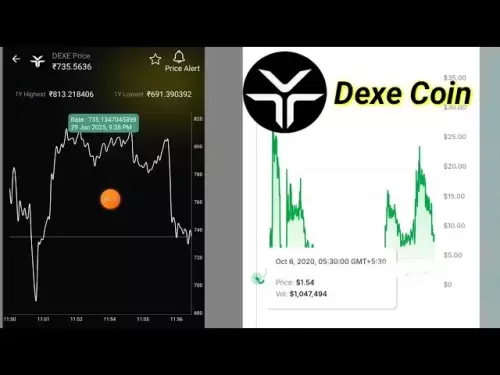-
 Bitcoin
Bitcoin $108,165.4587
0.78% -
 Ethereum
Ethereum $2,456.3517
1.15% -
 Tether USDt
Tether USDt $1.0003
0.00% -
 XRP
XRP $2.1934
0.05% -
 BNB
BNB $650.0935
0.52% -
 Solana
Solana $151.3905
2.69% -
 USDC
USDC $0.9998
0.00% -
 TRON
TRON $0.2751
-0.32% -
 Dogecoin
Dogecoin $0.1640
0.87% -
 Cardano
Cardano $0.5631
0.57% -
 Hyperliquid
Hyperliquid $38.7115
4.69% -
 Bitcoin Cash
Bitcoin Cash $493.1868
-0.39% -
 Sui
Sui $2.8217
3.61% -
 Chainlink
Chainlink $13.3994
2.08% -
 UNUS SED LEO
UNUS SED LEO $9.1632
0.94% -
 Avalanche
Avalanche $18.0318
1.97% -
 Stellar
Stellar $0.2388
0.35% -
 Toncoin
Toncoin $2.8763
1.41% -
 Shiba Inu
Shiba Inu $0.0...01160
1.59% -
 Litecoin
Litecoin $86.6393
1.29% -
 Hedera
Hedera $0.1485
0.16% -
 Monero
Monero $315.7948
1.56% -
 Polkadot
Polkadot $3.4240
1.88% -
 Bitget Token
Bitget Token $4.6314
-0.44% -
 Dai
Dai $0.9998
-0.01% -
 Ethena USDe
Ethena USDe $1.0002
-0.01% -
 Uniswap
Uniswap $7.2110
2.59% -
 Aave
Aave $270.6087
6.07% -
 Pi
Pi $0.5350
0.52% -
 Pepe
Pepe $0.0...09545
1.26%
Coin speculation skills in the currency circle
Understanding market trends and patterns is crucial for identifying potential opportunities and managing risk in the currency circle.
Jan 08, 2025 at 08:02 pm

Key Points:
- Understanding market trends and patterns
- Conducting thorough research and due diligence
- Managing risk through diversification and position sizing
- Utilizing technical analysis and charting tools
- Staying informed and adapting to changing market conditions
Coin Speculation Skills in the Currency Circle
1. Understanding Market Trends and Patterns:
- Track historical price movements and identify recurring patterns and anomalies.
- Utilize charting tools such as candlesticks and moving averages to spot potential trend reversals.
- Analyze volume data to gauge market sentiment and potential turning points.
- Study the macro-economic factors that may influence the cryptocurrency market, such as economic policies and geopolitical events.
2. Conducting Thorough Research and Due Diligence:
- Understand the fundamentals of each coin you consider investing in, including its underlying technology, team, and roadmap.
- Read whitepapers, follow project announcements, and join online communities related to the specific coin.
- Assess the coin's market capitalization, trading volume, and distribution of tokens.
- Seek professional advice or consult with experienced traders if necessary.
3. Managing Risk through Diversification and Position Sizing:
- Avoid concentrating your investments in a single coin. Diversify your portfolio across multiple coins with different risk profiles.
- Use position sizing techniques to determine the optimal amount to invest based on your risk tolerance and potential reward.
- Limit your investments to a small portion of your overall portfolio that you can afford to lose.
- Implement stop-loss orders to automatically close your positions at a predetermined price if the market moves against you.
4. Utilizing Technical Analysis and Charting Tools:
- Study candlestick patterns and technical indicators such as moving averages, Bollinger Bands, and Fibonacci retracements.
- Identify support and resistance levels to determine potential turning points in the price trend.
- Use charting software to backtest trading strategies and simulate market scenarios.
- Combine technical analysis with fundamental analysis for a more comprehensive understanding of the market.
5. Staying Informed and Adapting to Changing Market Conditions:
- Monitor news sources, social media, and industry events related to the cryptocurrency market.
- Join online forums and connect with other traders to share insights and learn from their experiences.
- Attend educational webinars and workshops to stay up-to-date on the latest trends and developments.
- Be willing to adjust your trading strategies and exit positions when market conditions change.
FAQs:
- What is the best cryptocurrency to invest in?
The best cryptocurrency to invest in depends on your individual risk tolerance, investment goals, and market research. There is no one-size-fits-all answer.
- How do I start trading cryptocurrencies?
You can start trading cryptocurrencies by creating an account on a cryptocurrency exchange, understanding the basics of trading, and developing a trading strategy.
- What is a stop-loss order?
A stop-loss order is an order placed with a brokerage to sell a stock or other asset if the price falls to a certain level, limiting the loss on the trade.
- What is a candlestick pattern?
A candlestick pattern is a graphical representation of the price movement of a security during a specific period of time, typically one day or one week.
- What is a moving average?
A moving average is a technical analysis indicator that shows the average price of a security over a specified number of periods, smoothing out price fluctuations.
Disclaimer:info@kdj.com
The information provided is not trading advice. kdj.com does not assume any responsibility for any investments made based on the information provided in this article. Cryptocurrencies are highly volatile and it is highly recommended that you invest with caution after thorough research!
If you believe that the content used on this website infringes your copyright, please contact us immediately (info@kdj.com) and we will delete it promptly.
- Ruvi AI: The Audited Token Stealing Ripple's Spotlight
- 2025-06-30 02:30:12
- Bitcoin's Supply Shock: Exchange Balances Plunge Amidst Bullish Expectations
- 2025-06-30 02:30:12
- Crypto Investors Navigate US-Iran Tensions: Market Reaction and Resilience
- 2025-06-30 02:40:12
- ATOM, BNB, BlockDAG: Decoding the Latest Crypto Dynamics in the Concrete Jungle
- 2025-06-30 01:30:11
- Bitcoin's Role in a Weak Dollar World: Crypto Demand and Freedom
- 2025-06-30 00:50:12
- Binance, CZ, and XRP: Navigating the Crypto Currents
- 2025-06-30 00:55:12
Related knowledge
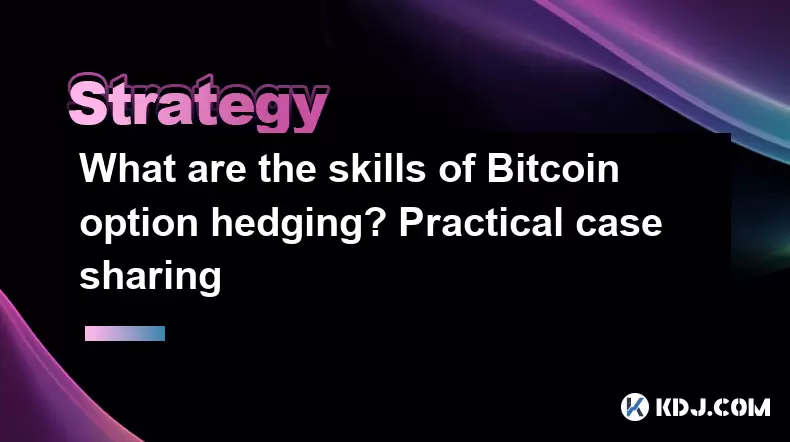
What are the skills of Bitcoin option hedging? Practical case sharing
Jun 24,2025 at 04:01pm
Understanding Bitcoin Option HedgingBitcoin option hedging is a risk management strategy used by traders and investors to protect their positions in the volatile cryptocurrency market. By using options, individuals can limit potential losses while retaining the opportunity for profit. In essence, it allows one to insulate against adverse price movements...
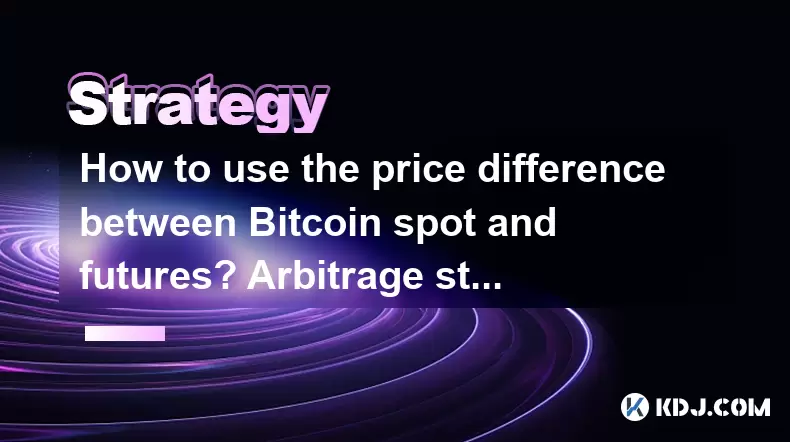
How to use the price difference between Bitcoin spot and futures? Arbitrage strategy
Jun 20,2025 at 02:56pm
Understanding Bitcoin Spot and Futures MarketsTo effectively leverage arbitrage opportunities between Bitcoin spot and futures markets, it's essential to understand the fundamental differences between these two types of markets. The spot market refers to the direct buying and selling of Bitcoin for immediate delivery at the current market price. In cont...
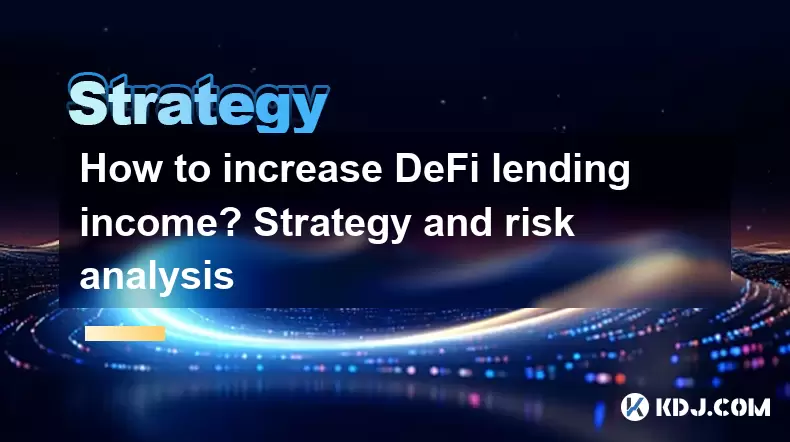
How to increase DeFi lending income? Strategy and risk analysis
Jun 24,2025 at 02:08pm
Understanding DeFi Lending and Its Income PotentialDeFi (Decentralized Finance) lending has emerged as a popular way to earn passive income in the cryptocurrency space. Unlike traditional banking systems, DeFi lending platforms allow users to lend their crypto assets directly to borrowers without intermediaries. The lenders earn interest based on the su...
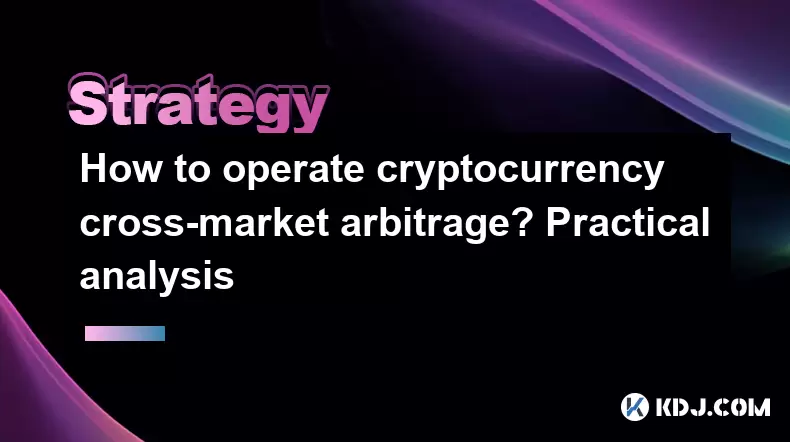
How to operate cryptocurrency cross-market arbitrage? Practical analysis
Jun 23,2025 at 04:01am
Understanding Cryptocurrency Cross-Market ArbitrageCryptocurrency cross-market arbitrage involves taking advantage of price differences for the same digital asset across different exchanges. The core idea is to buy low on one exchange and sell high on another, capturing the profit from the discrepancy. This strategy relies heavily on real-time market da...

How to make profits from high-frequency cryptocurrency trading? Sharing core skills
Jun 19,2025 at 05:07pm
Understanding High-Frequency Cryptocurrency TradingHigh-frequency trading (HFT) in the cryptocurrency market involves executing a large number of trades at extremely fast speeds, often within milliseconds. This method relies on small price discrepancies across exchanges or within a single exchange’s order book. Traders use complex algorithms and ultra-l...
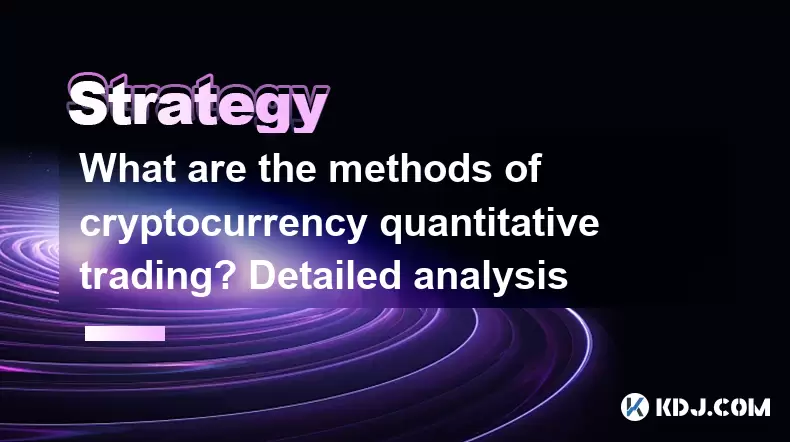
What are the methods of cryptocurrency quantitative trading? Detailed analysis
Jun 22,2025 at 11:07pm
Understanding the Core of Cryptocurrency Quantitative TradingCryptocurrency quantitative trading refers to the use of mathematical models and algorithms to execute trades in the digital asset market. Unlike traditional discretionary trading, which relies heavily on human judgment, quantitative trading leverages data-driven strategies to identify profita...

What are the skills of Bitcoin option hedging? Practical case sharing
Jun 24,2025 at 04:01pm
Understanding Bitcoin Option HedgingBitcoin option hedging is a risk management strategy used by traders and investors to protect their positions in the volatile cryptocurrency market. By using options, individuals can limit potential losses while retaining the opportunity for profit. In essence, it allows one to insulate against adverse price movements...

How to use the price difference between Bitcoin spot and futures? Arbitrage strategy
Jun 20,2025 at 02:56pm
Understanding Bitcoin Spot and Futures MarketsTo effectively leverage arbitrage opportunities between Bitcoin spot and futures markets, it's essential to understand the fundamental differences between these two types of markets. The spot market refers to the direct buying and selling of Bitcoin for immediate delivery at the current market price. In cont...

How to increase DeFi lending income? Strategy and risk analysis
Jun 24,2025 at 02:08pm
Understanding DeFi Lending and Its Income PotentialDeFi (Decentralized Finance) lending has emerged as a popular way to earn passive income in the cryptocurrency space. Unlike traditional banking systems, DeFi lending platforms allow users to lend their crypto assets directly to borrowers without intermediaries. The lenders earn interest based on the su...

How to operate cryptocurrency cross-market arbitrage? Practical analysis
Jun 23,2025 at 04:01am
Understanding Cryptocurrency Cross-Market ArbitrageCryptocurrency cross-market arbitrage involves taking advantage of price differences for the same digital asset across different exchanges. The core idea is to buy low on one exchange and sell high on another, capturing the profit from the discrepancy. This strategy relies heavily on real-time market da...

How to make profits from high-frequency cryptocurrency trading? Sharing core skills
Jun 19,2025 at 05:07pm
Understanding High-Frequency Cryptocurrency TradingHigh-frequency trading (HFT) in the cryptocurrency market involves executing a large number of trades at extremely fast speeds, often within milliseconds. This method relies on small price discrepancies across exchanges or within a single exchange’s order book. Traders use complex algorithms and ultra-l...

What are the methods of cryptocurrency quantitative trading? Detailed analysis
Jun 22,2025 at 11:07pm
Understanding the Core of Cryptocurrency Quantitative TradingCryptocurrency quantitative trading refers to the use of mathematical models and algorithms to execute trades in the digital asset market. Unlike traditional discretionary trading, which relies heavily on human judgment, quantitative trading leverages data-driven strategies to identify profita...
See all articles





















